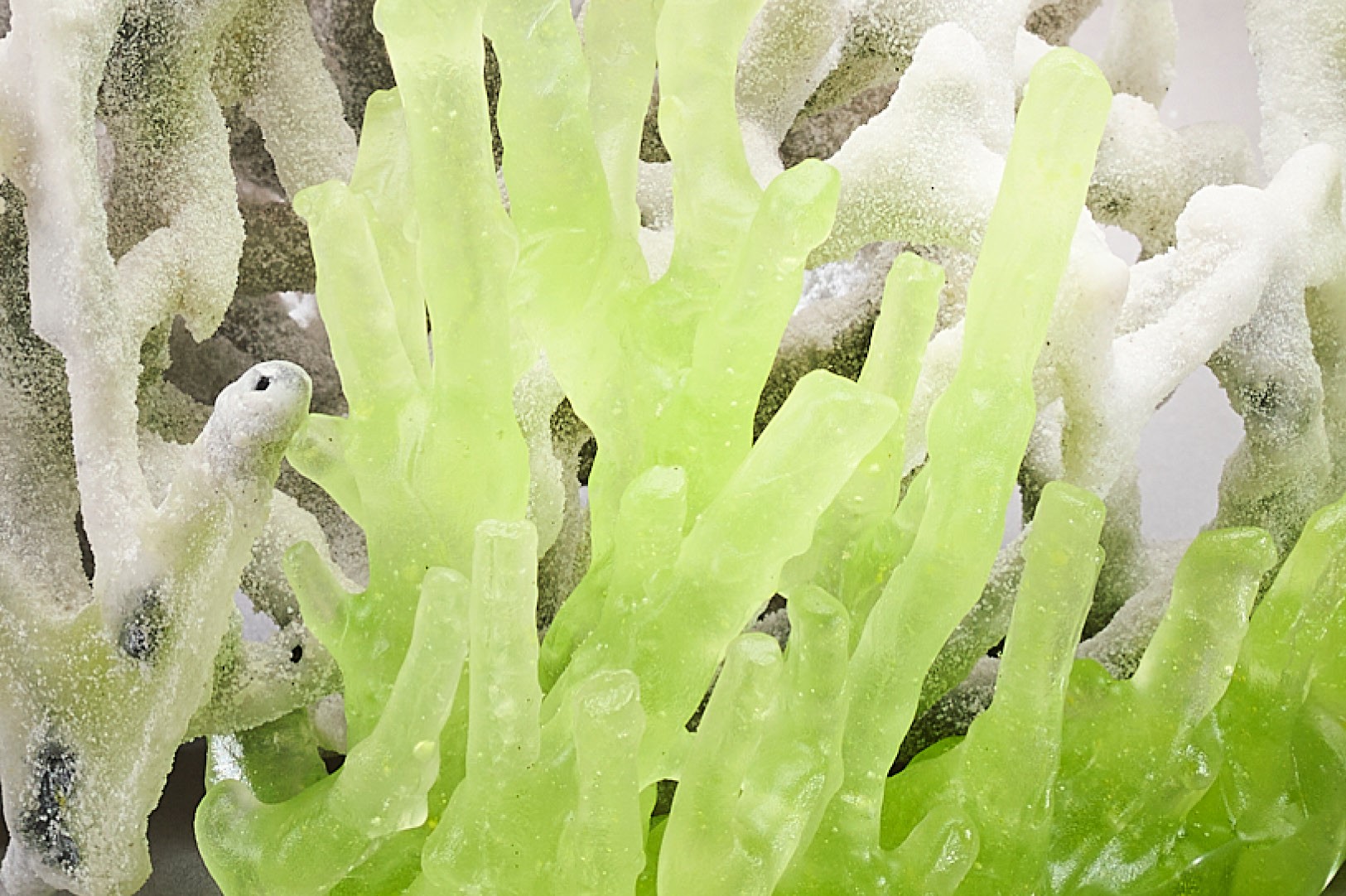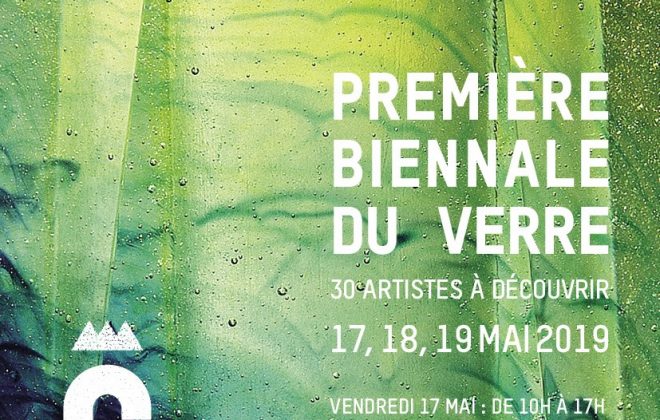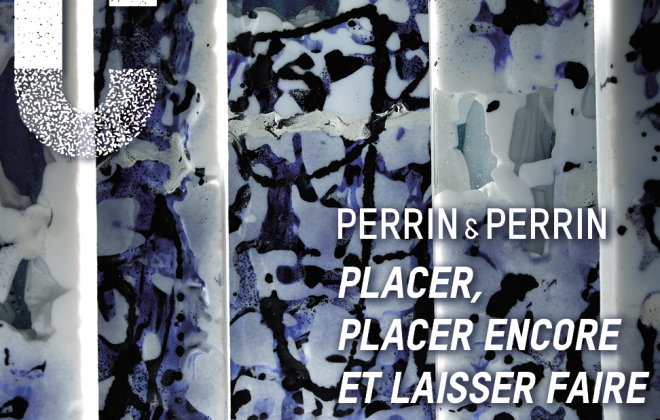“Chantal Delporte. Silent signals”
Born in Mons (Belgium) in 1967, Chantal Delporte studied plastic arts at the Ecole supérieure des Arts Saint-Luc in Brussels, specialising in interior design. She soon became interested in glass, and after graduating, she devoted herself to discovering the different techniques applicable to this very special material. First, she trained in glass cutting at the Ecole des Métiers d’art du Hainaut. In 1992, she began a three-year course at the Instituut voor Kunst en Ambacht (IKA) in Mechelen. At the same time, she attended courses at the Université d’été de Sars-Poteries, organised by the Musée du Verre. There she rubbed shoulders with some of the great names in contemporary glass: Jaromir Rybak, Udo Zembok, Michele Perozini, Joan Crous, Etienne Leperlier… artists renowned for their mastery of two techniques that would become those of Chantal Delporte: pâte de verre and fusing.
At the same time, she shares her passion for glass in workshops that she both runs and organises. She is also behind the creation and development of the glass workshop at the Braine-l’Alleud School of Art, where she has been teaching since 2005. Chantal Delporte, through her involvement in teaching glass, in various glass events and through her commitment to BeCraft, is without doubt a key figure in contemporary glass in Belgium.
Chantal Delporte’s work is rooted in the history of trees, from their birth to their death, and in what they represent in the collective imagination: symbols of strength, wisdom, fertility, perpetual regeneration… life. Branches, twigs, roots… are the basis of the sculptures born of Chantal Delporte’s imagination. Thanks to the intrinsic qualities of glass, she freezes these living moments in eternity, she freezes the ephemerality of the moment in the eternity of the material. It reveals the aesthetic, organic, symbolic and sensory richness of trees and transports us into its imaginary world. She tells us the story of time, of evolution… of our relationship with nature. With the “Cubes”, Chantal Delporte draws a parallel between the singularity and personality attributed to certain species and human characteristics. In “Bestiaires” and “Inflorescences”, the tangled, apparently fragile twigs take us back to the common denominator of all living things on earth: the DNA twig. With “Xylème” and “Circonvolution”, we can’t help but be amazed and bewildered by the mimicry between our blood system and the roots of the trees that, underground, create a vast interconnected network. Inflorescence” is a reminder that death can give birth to life: nature always takes over in the end.
Through her work, Chantal Delporte invites us to respect living things. For thousands of years, mankind has lived in harmony with the forest. In many early traditions, there is a reference to a “cosmic tree”, which forms the link between “the underworld”, the earth and the sky, giving the forest a sacred character. And then he started destroying it, no longer respecting it. With industrialisation, in less than a century humanity has destroyed nearly 80% of primary forests. And yet, trees and forests are an inexhaustible source of knowledge, of marvellous and terrible stories, of daydreams, of imaginations, of wonder. Chantal Delporte’s work invites us to reconnect with the living world, to relearn how to live in harmony with the trees, the animals and our ecosystem, on which we think we are no longer dependent… and yet we are. Subtly, like the Little Thumb, she sows the seeds of an essential ecological message: the need to act to save the world… in order to save ourselves. Chantal Delporte, discreetly committed, you say?
Related Posts
Leave a Reply Cancel reply
Calendrier
| M | T | W | T | F | S | S |
|---|---|---|---|---|---|---|
| 1 | 2 | 3 | ||||
| 4 | 5 | 6 | 7 | 8 | 9 | 10 |
| 11 | 12 | 13 | 14 | 15 | 16 | 17 |
| 18 | 19 | 20 | 21 | 22 | 23 | 24 |
| 25 | 26 | 27 | 28 | 29 | 30 | |




